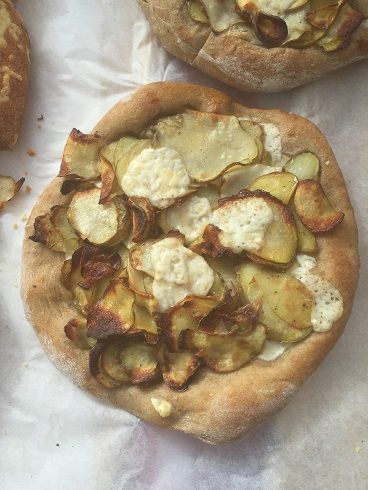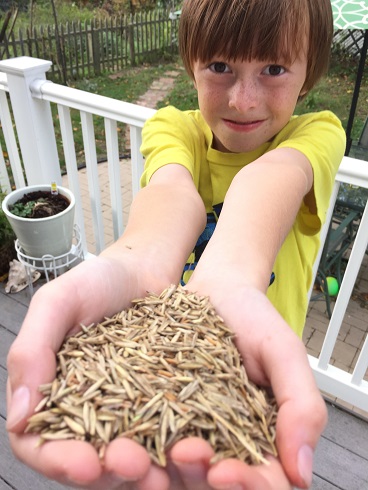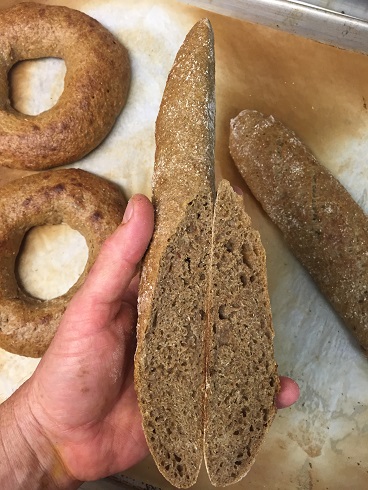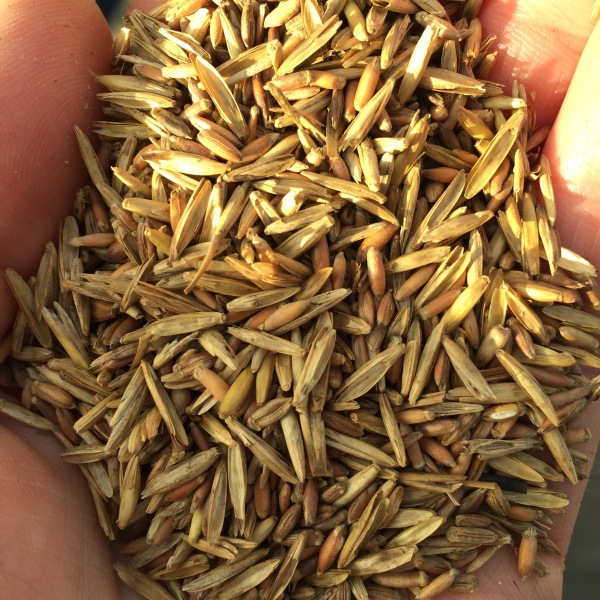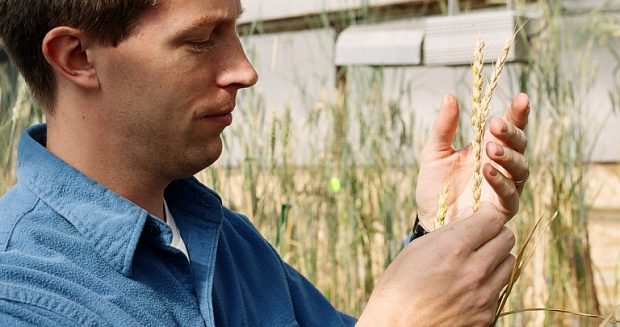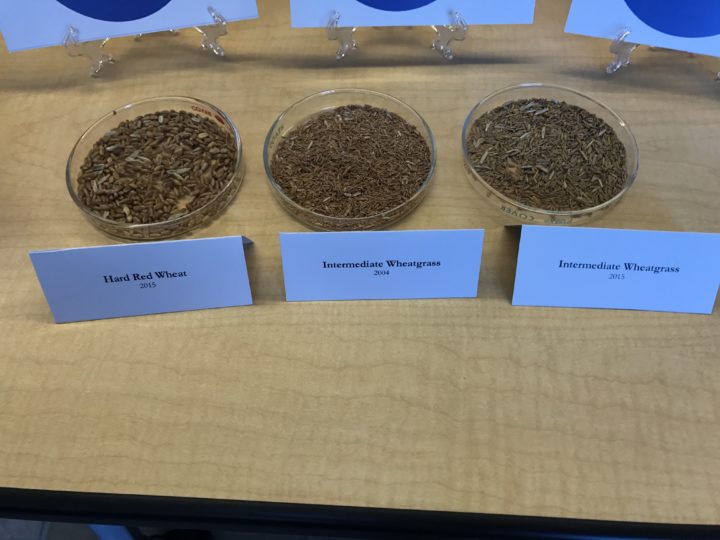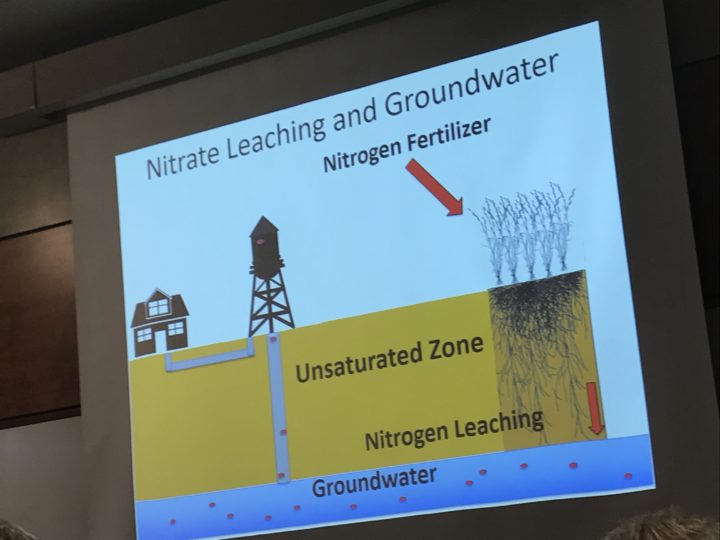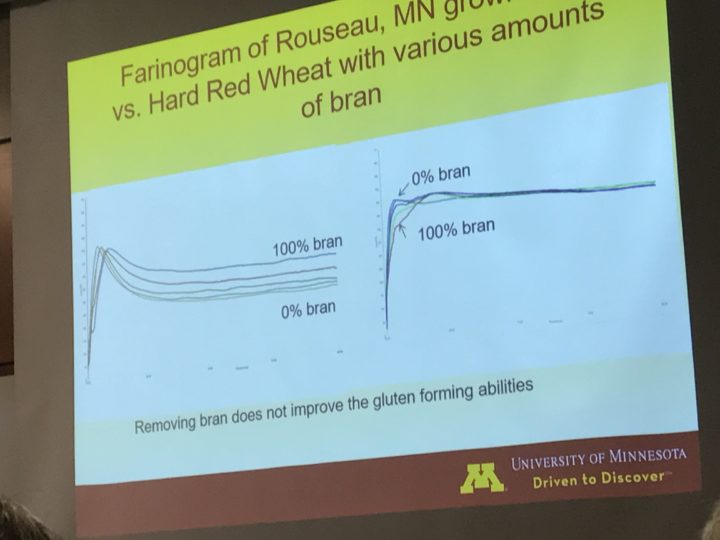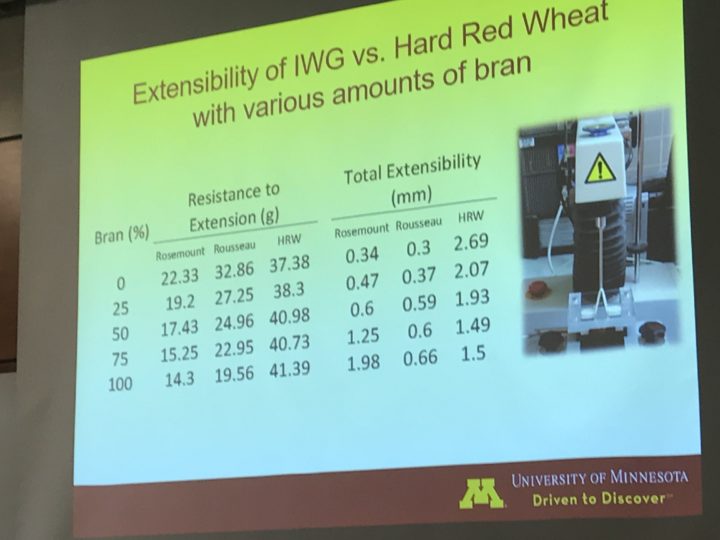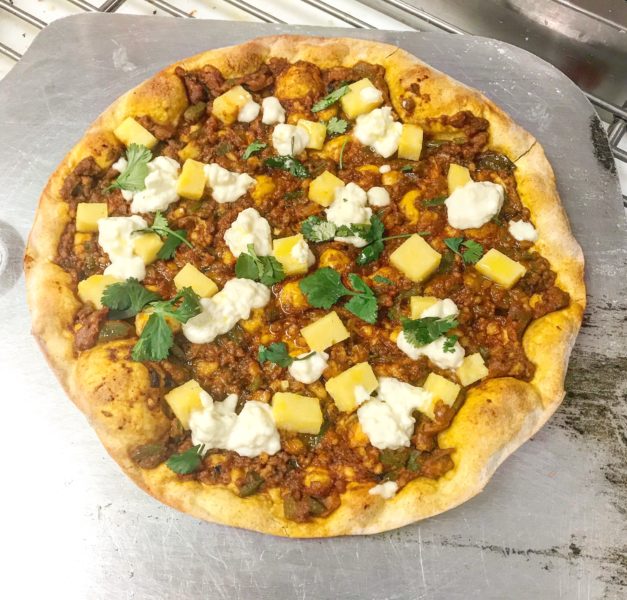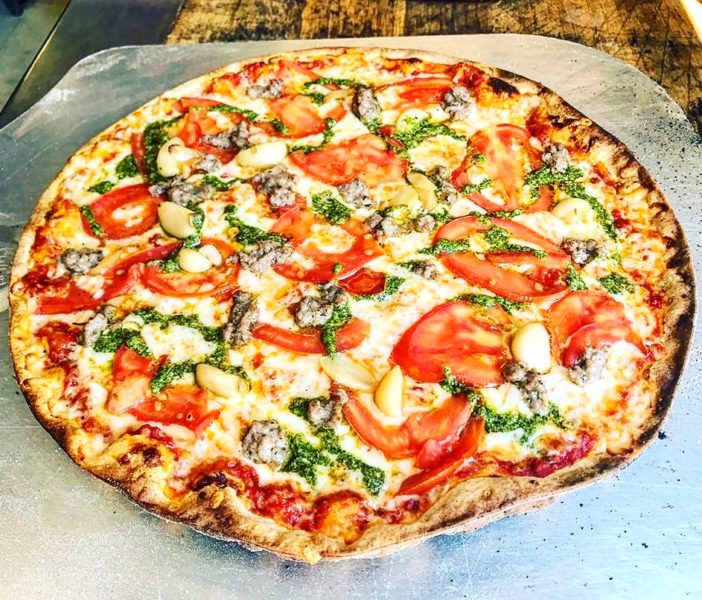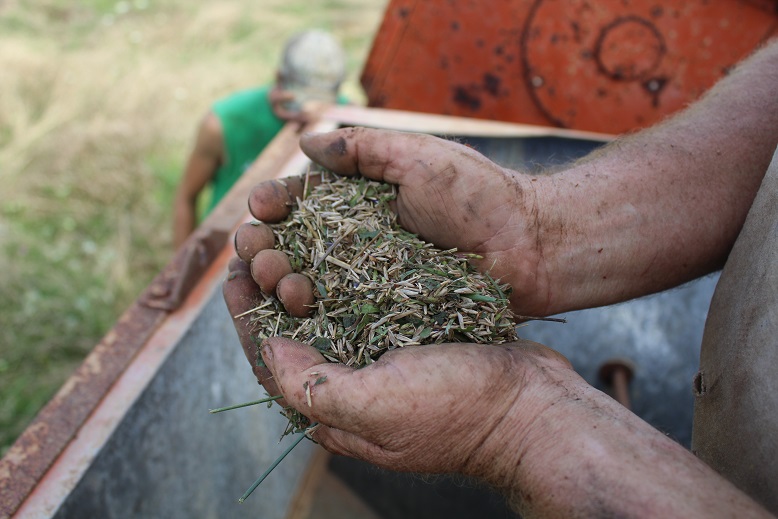John Gutekanst

I was just 21 years old that freezing December day in 1982 flying along the frozen coast where Vladivostok, USSR, North Korea and China intersect. The cold war was reaching its zenith and America had foolishly made me the first line of defense against communist tyranny. As a Naval air crewman, my official priority was to listen and decode Soviet ground-to-air communications so we didn’t get blown out of the sky. My personal priorities were to never run out of cigarettes and ensure one of my headphones was tuned to the BBC’s History of British Rock, but priority number one was to protect the parcel secretly nestled between my warm crotch and the seat. It was the best damned chicken yakitori on the planet and I would guard it with my life.
As our P-3 Orion turboprops droned on, I looked down the line at my fellow air crewmen who populated this rugged surveillance plane. Behind the pilots, our electronic warfare guys with their large arrays sat with the navigators, the Russian linguists and analysts sat mid-plane, the Korean and Chinese linguists scattered themselves around me and I sat ringside with the largest window on the plane, perfect to see how close we were to our enemies or our deaths.
With everybody centered on their work, the coast was clear. I reached down and gently drew out the parcel that held my exquisite lunch and unfolded the wax paper on my small table. I stopped abruptly and listened intently to a new series of Soviet Morse numbers blasting through my right headset. The staccato seventeen-digit Morse code sent by the Soviet ground station indicated that another Communist Tu-16 Badger Bomber was taking off from a base on Sakhalin Island much to our north. In the headset on my left ear was the, gravelly signal of Roger Daltry screaming, “We won’t get fooled again…” I reported the bomber to a nearby Russian linguist while bobbing my head to the music. I looked down at my prize and silently rejoiced in anticipation of eating what I had looked forward to all day- Negima Yakitori. These barbecued skin-on chicken thighs skewered with the undersized negi leeks were my favorite in-flight meal. My eyes grew wide at my treasure but I had other distractions to think about first.
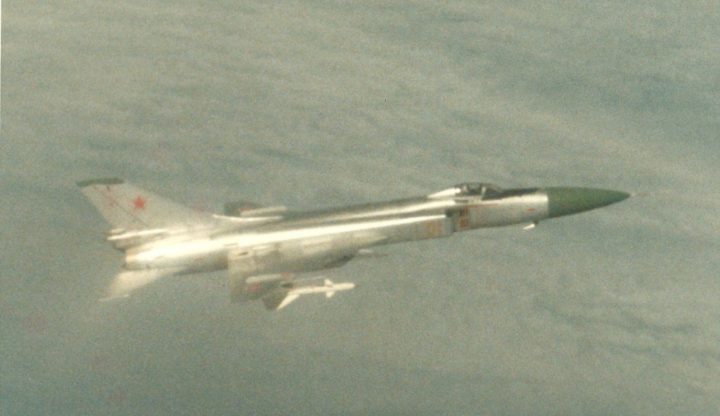
Outside my bubble window floated our communist escort just 30 yards away; an Su-15 Flagon interceptor. This was the infamous plane that would shoot down Korean Airlines 007 a year later. The two white AA-3 ‘Anab’ missiles hung below the delta-winged jet menacingly. I stuck my head close to the window, waved and flashed a smile with a friendly thumbs-up hoping to placate the pilot so he’d think twice about an air-to-air missile launch. For the past few years I had been flying, this technique had worked well.
At the time, our commanders referred to our flying unit as “The tip of the spear” but we referred sardonically to our squadron as the Sanford and Sons of the flying world. This reconnaissance airplane was so old that it was used during the Bay of Pigs incident under President Kennedy. The bathroom floors were rotting from years of badly aimed urine and the heat rarely worked in the rear where I sat. Being airborne a bumpy ten hours in this deathtrap was a study in extremes. I knew I could die at any minute and, given the choice of my demise, I would rather take a warm missile-hit than a cold crash landing in the roiling Sea of Japan below. As I blew warmth into my shivering hands, my head smashed against the bulkhead because of another too-tight turn by the worst pilot in our squadron.
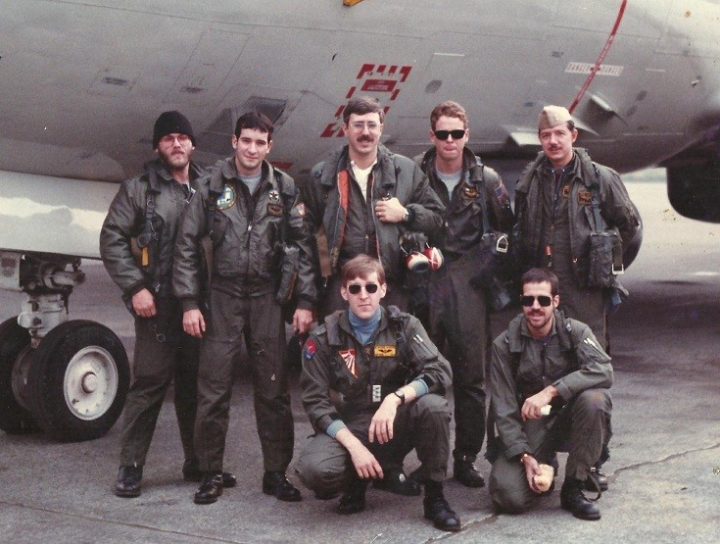
Our pilot today was Captain Elliot, he was also the XO, or Executive Officer. Being the “Number Two” answerable only to the Commanding Officer, his main duty was at a desk, dealing with the day-to-day administration. Unfortunately for our crew, he was obligated to log a certain amount of flight time to keep his flight status and those gold wings on his chest. The Captain was a source of consternation for our crew because of his quirky flying abilities like turning too tight, diving too steep and just plain being an asshole who doesn’t turn on enough heat during our ten-hour missions.
I looked around for skulking crewmates and bent over gulag-style shielding my yakitori treasure from prying eyes and hungry beggars. Food was a premium on these long flights. The rookies usually only brought a cup of Ramen or a sandwich. The really stupid rookies always fell for buying the cheapest sandwich at the nearest off-base convenience store- “The mayonnaise sandwich” as it was labeled, (in Japanese), was just that; two emaciated bread slices with the wafer-thin sheen of creamy mayo. It was these schmucks who wandered the plane after five hours like lepers in the fetid streets of old London trying to find food. They’d strike up a conversation with anyone and act like long-lost friends but their sunken eyes said, “Please dude, just food- any food at all.” Everyone avoided eye-contact with these zombie-morons because all of us knew we had five more hours to go. We may have been protecting the western world from communist aggression, but up here it was dog-eat-dog when it came to food.
Pulling one stick from my stash, I touched the yakitori. It was cold to the touch but still brilliantly shiny and sticky with sharp, blackened edges of pure sweet-salty char. I bought this the night before from a yakitori-ya near my base in Atsugi City, Japan. It was my secret yakitori place and I hid its location from everyone except my roommate not just because they made the best damn yakitori I have ever tasted, but because of the two pretty sisters who worked there.
On that previous night, my caustic roommate Timmy and I stood off the busy streets of Atsugi City leaning in the chest-high window of the small, smoky kiosk like a pair of gigolo’s sizing the girls up. The shop was family owned; dad who was a yakitori master, never hid his contempt for us, the mother wasn’t much better, but the two daughters were beautiful with long black flowing hair put up in smart, tight buns. I visited often.
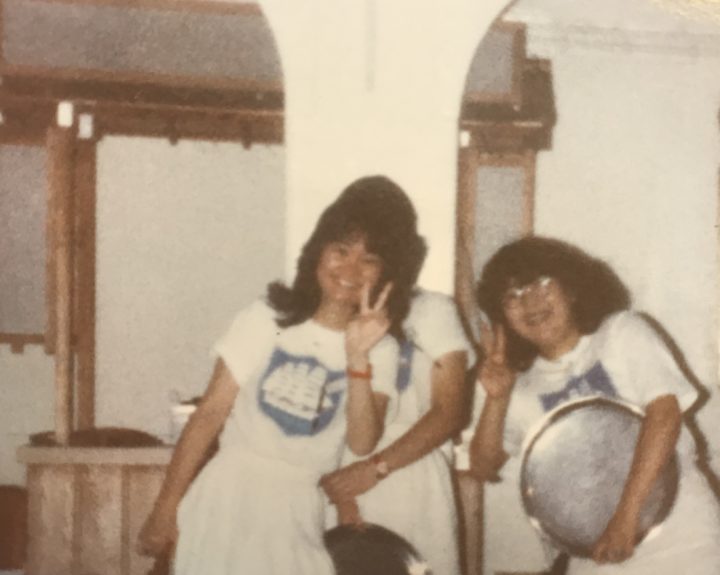
“Nice view huh?” Timmy said nodding at the girls. Timmy’s leering made their dad, standing just feet away, scowl at us with restrained hatred.
“I think you gotta find a smoother way to connect with these babes.” I chided Timmy. “Uh… Kong-banwa, Ikaga deshita?” I said in swaggering ignorance. The girls both smiled and giggled with hands over mouths at my stupid attempt to say “good evening, how are you doing?” I looked at Tim and raised my eyebrows in guy language saying, ‘Now that’s how you do it man!’
“What kind of yakitori are you gonna get?” I asked Timmy while dad basted numerous yakitori sticks on the narrow grill with his liquid “Tare,” or traditional basting sauce.
The old guy proudly held his small handled, light green ceramic urn that looked centuries-old and dipped a brush into that concentrated liquid. This mysterious barbeque sauce distinguishes every yakitori master from others and is either dipped or brushed onto the chicken skewers. It is made from sake, soy sauce, caster sugar and a reduction of previously roasted chicken carcasses and bones (reduced even further into what is called a Tare.) Some tare is reputed to be hundreds of years old and is replenished with cooked chicken juices and soy every cooking cycle.
Dads brushing made the juices drip onto the hot Bincho-Tan charcoal and the smoke billowed out of the small window becoming a chicken-soy fog of flavor that blanketed my head enticing me even more than the prospect of getting lucky with one of his fine daughters.
I swiped the smoke away with my hand and looked up in wonder at the overhead menu written in Japanese and English:
Lamb 160 yen
Beef 140 yen
Pork 120 yen
Chicken 100 yen
Meat 75 yen
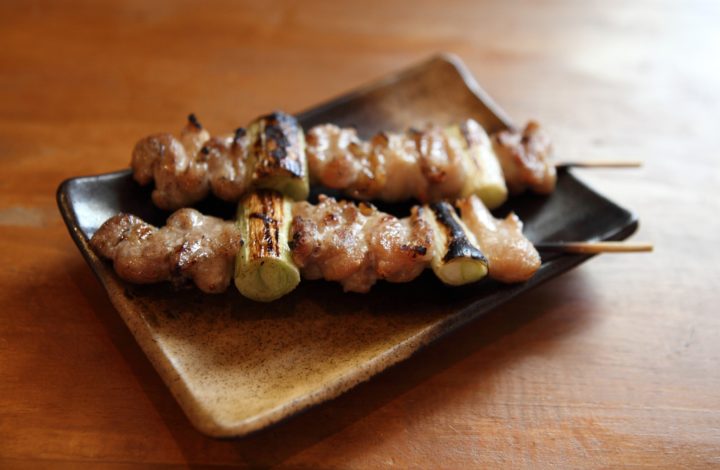
“Just get me the chicken John, five sticks, make sure dad here doesn’t spit on ‘em. Timmy coughed while he put a cigarette in his mouth and walked slowly away.
“What’s up with you Tim?” I asked. “Your acting really weird today.”
He turned around with a worried look. “Nothing matters dude, we’re all probably gonna die tomorrow anyway. I might as well have the best damn food on the planet as my last meal.”
“What?” I asked.
Tim walked back to me. “Didn’t you see the flight roster that was posted on base? That crazy Captain Elliot is our pilot tomorrow, y’know, the ‘Nam burnout?”
I turned and looked at the old Japanese dad who was staring at us and flashed a fake smile. I didn’t want to make him mad, especially before getting my chicken yakitori for tomorrow’s long flight.
Now, I was airborne, frozen and hungry. I stared at the jet bouncing along like a beautiful shiny bullet. I squinted as the pilot turned his head and looked straight at me through his clear canopy; his helmet was white with a cat or a skull on it. I waved again and gave another thumbs-up but received nothing. I hoped it was a cat.
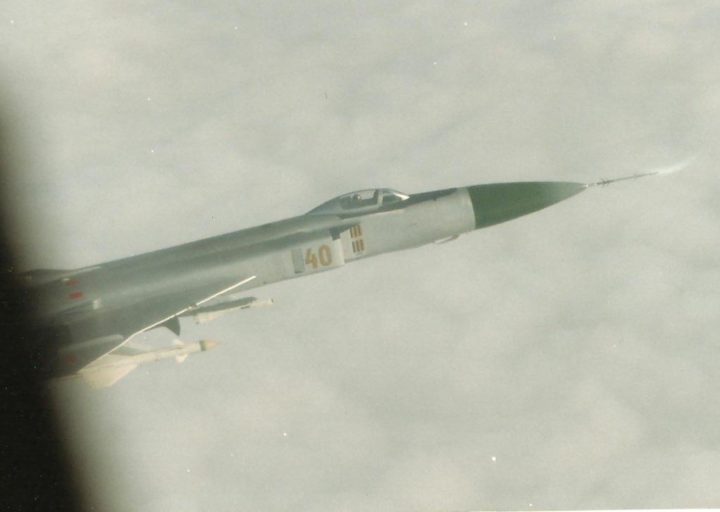
This Flagon was just a flying gun and specifically made for blowing the shit out of airborne imperialistic interlopers (like me). The squadron insignia indicated that this pilot came from a base in Eastern Siberia rumored to be dumping ground for wash-outs, drunks, troublemakers and homicidal maniacs. My stomach turned while copied more code coming through my headset.
“Petty officer Gutekanst.” A muffled directive came from beyond my earphones and pulled me out of my yakitori reverie. I slid the yakitori under my writing pad and swiveled my chair around to find Captain Elliot, our pilot, crouching next to me with a crocodile-like officer smile. My hackles went up because he never acknowledged me in the past. I knew he wanted something from me.
Elliot was the oldest pilot in my squadron and looked like a tall Richard Gere. His close cropped salt and pepper hair was perfect for his pilot’s countenance-cool, crisp, calm and daring. He was an ex-Marine chopper pilot who flew above the jungles of Vietnam and always landed this giant plane as though it was a Huey dropping into combat with a load of jar-heads to attack Charlie. We always bounced down the runway like a sumo wrestler on a trampoline, radios jostled off of their mounts, coffee spilled into our laps and nerves jumped with every horrific jolt. It was not a nice way to end a ten hour flight but none of us had the balls to tell this hard-ass, Captain America that his flying abilities sucked.
“I saw what you’re doing son.”
“Sir?” I asked.
“Oh, don’t worry sailor, nothing wrong. It’s just that ever since the ‘Nam’, I find certain situations in life amusing. His words reeked of authority.
“I don’t understand sir.”
“You see Vladimir out there in his shiny crotch rocket?” he pointed to the fighter.
“Yes sir.” I didn’t look but raised my eyebrows in questioning stupidity, (officers like that.)
The Captain slapped my shoulder and laughed. “There will never be another moment in all of time when a young American patriot gives the thumbs-up to a commie jet jockey poised to blow the crap out of him while chewing on a stick of chicken yakitori.” He said pointing to my semi-hidden chicken.
The Captain laughed then knelt closer to the bubble window and waved to get the Soviets attention. Over his shoulder I saw the Soviet pilot turn his head toward us. Captain Elliot’s eyes lost their sparkle as he squinted and stuck his head further in the concave window; his jaw bone pulsed tensely and his vealy cauliflower ears laid back like a pissed-off pit bull.
“By the way, got any more of those chicken sticks?” He whispered still gazing at the Flagon.
“No sir.” I lied and slowly closed my thighs protecting my yakitori thighs.
He smiled aggressively in the blue light and flipped the Soviet pilot off pushing his middle finger against the plastic bubble. “Fucking Commeeee!” he yelled so loud that he fogged the glass. Then the Captain stood up and trotted happily toward the cockpit before saying over his shoulder; “Carry on sailor, just be careful with that sharp bamboo, we may hit some turbulence soon.”
I turned back to look at the fighter in disbelief and began wiping officer spittle off the window with my forearm. I wanted to apologize to the Soviet pilot but couldn’t.
The Flagon pilot flashed his underside missiles at us. This was the universal signal of an imminent launch or at least agitation on the pilot’s part. It was not lost on me. I contemplated reporting what the Captain did to my Chief then thought better of it. The Flagon peeled-off and disappeared.
As I stared at the slate-blue horizon, I wondered if this was the last sky I would see. It was then that Timmy’s words came back to me about having a last meal. I pulled the stick from under my pad and began nibbling small chunks around the yakitori corn-on-the-cob-style hoping to prolong this experience of perfect chicken taste. Flavors of maple, deep chestnut and salted caramel melded with the cold chicken, crunchy charred leek and spastic Morse code. The unmistakable feeling of the perfect food moment ended my torment. I was at peace with the world.
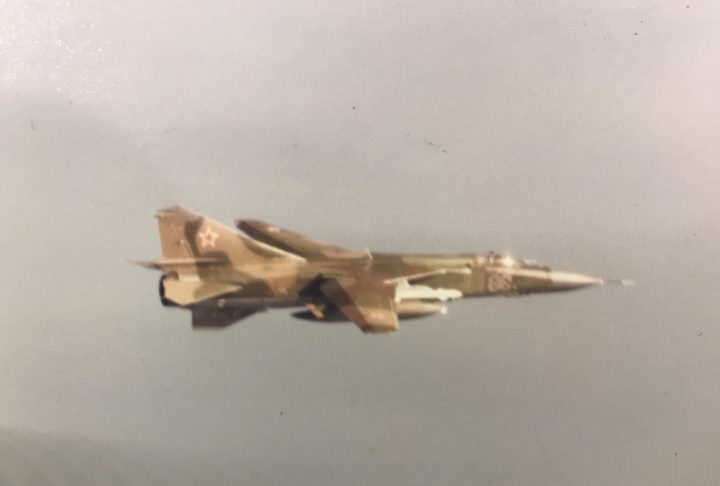
Suddenly a speck on the horizon came from the same direction where the flagon disappeared. I pushed the stick all the way into my mouth and held the chicken and leeks with my teeth, pulled the stick out, threw it over my shoulder and chewed like a motherfucker in cadence with the convulsive voices of the Russian linguists yelling their reports in. The aircraft morphed from a small dot against the blue-grey ocean clouds to a much larger dart with a white smoky tail. The Russian Morse code was being sent so fast now it sounded like a woodpecker but all I thought about was finishing this yakitori food-wad in my mouth. The jet got closer and I chewed faster, instinctively pulling the belt on my life jacket and adjusting my seat. All I could think about was dying without eating all my yakitori. My shaking hands unwrapped the two remaining yakitori sticks. I was determined to eat them even if I was falling to my death. As it neared, I saw that this new fighter was a camouflaged Mig-23 Flogger with cannons that would rip us to shreds in seconds. Thankfully, he floated 40 yards outside my window like his predecessor.
I was safe. Exhaling deeply, I turned to the window waved another introduction to the Mig with a big thumbs-up, a fake smile and yakitori sauce coating my chin and cheeks. I unbuckled my life vest and looked around, still shaking, then re-wrapped the last sticky skewers for later in the flight.
I’ve lived to eat chicken yakitori for 35 more years but for some reason, none have ever compared to those delicious sticks on that fateful day. (No thanks to you Captain.)

